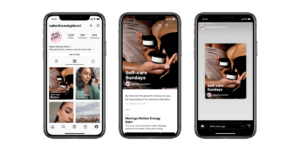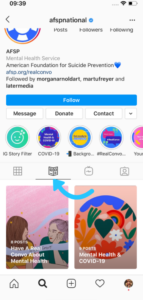What Will Influencer Marketing Look Like in 2021
It’s fairly safe to say that 2020 was a tough year for us all, in personal and professional life. We have all needed to adjust to the new normal. One industry that was heavily impacted was influencer marketing, where they saw a sharp decline in the value of their content as people moved indoors and grappled with the loss that the COVID-19 pandemic has imposed on the world. What does this mean for the future of influencer marketing in 2021? Experts at Onimod Global took a deep dive into the topic to help you decide when it’s appropriate to use an influencer, and how that will change in the upcoming decade.
Where influencer marketing began
Initially, before brands used celebrity endorsements, they used characters to evoke empathy from consumers such as Santa Claus for Coca Cola and Tony the Tiger for Kellogg’s cereals. The next wave included all sorts of celebrity and public figure endorsements. This helped brands to get their consumers to connect the dots between brand, trust, and recommendations by public figures.
Then entered the influencer era: where celebrity endorsements are still popular, but now they have to compete with “normal” personalities. Influencers are similar to characters in the sense that they still perform the role of someone in an ad on social media but they are, and very well could be, your neighbors; just with hundreds of thousands of followers online. Influencer marketing has boomed in popularity over the last years, especially in the fashion and lifestyle industries. Consumers that would once shop based on cool advertising and customer reviews, have changed their ways and will buy based on a raving review from their favorite influencer. Today, influencer marketing is worth a reported $10 billion dollars, and now every social platform has been involved in some way.
Impact of microinfluencers
While the influencers and celebrities with an established audience of hundreds of thousands of followers can make a significant impact on your overall sales, they can also take a massive toll on your company’s wallet. This is why brands also opt for “microinfluencers”, or social media personalities with a lower follower count.
Their content is usually centered around a very niche passion or community, some examples being health & beauty, trucking & logistics, or travel. The most incredible USP about microinfluencers is that they can have an engagement rate of nearly 60% versus that of a celebrity doing something similar. While being a cost effective option for a brand that wants to get involved in influencer marketing, they are also seen as very trustworthy source of information.
The future of influencer marketing
What’s up next for the future of influencer marketing? The first change we’ve seen thus far is influencers beginning to charge for exclusive content on Instagram and other platforms. Some charge a monthly fee to become a “Close Friend” on Instagram, while others are trialling WeChat’s new paywalls. In effect, content quality is becoming a focus.
However, this has the potential to also be a benefit for brands. If the influencers they work with are more invested in producing high quality content, they could be more likely to develop stronger partnerships with a select number of brands. “It will enable influencers to avoid having ‘one night stands’ with brands and rather focus on creating long-term ambassadorships with brands that are truly authentic to their lifestyle,” says Krishna Subramanian, CEO of influencer marketing and branded content firm Captiv8.
Private fan subscriptions are just one of many changes we predict will happen in the next decade, and Onimod Global experts will be sure to keep you up to date on all new influencer marketing news.
More from Onimod Global
Onimod Global is looking forward to the future and helping your business reach your full digital potential. Interested in growing your digital presence for your company? Reach out to us here!
Onimod Global releases the latest digital marketing news and essential marketing tips every Tuesday and Thursday! To catch up on the top digital marketing news and trends, click here. To find out more about who we are and what we do, click here.



